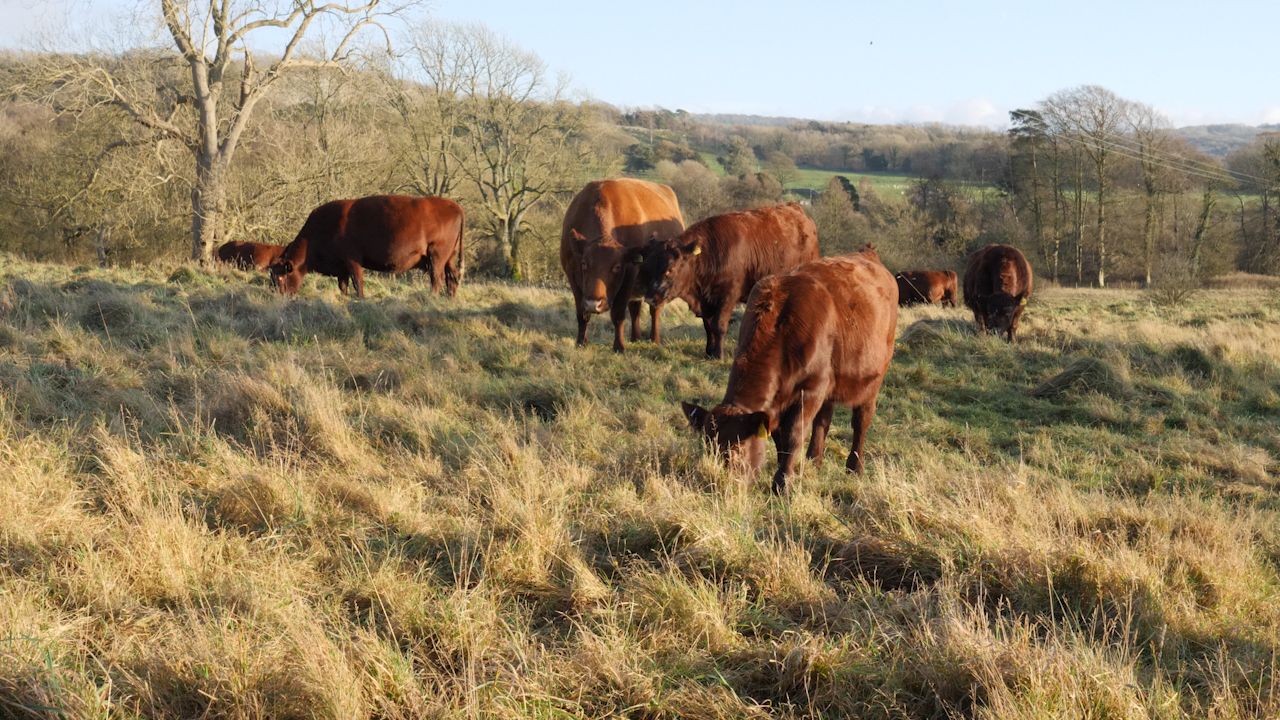
Regenerative Agriculture - George Hosier, Wexcombe Manor Farm
An interview with George Hosier of Wexcombe Manor Farm in Wiltshire about the changes he has made to his farming practices to improve soil fertility, reduce greenhouse gas emissions and increase biodiversity while reducing his costs.
Wexcombe Manor Farm is a 625 Ha (1500 acres) mixed arable and beef farm that was purchased by George Hosier’s grandfather a hundred years ago. He now runs the farm with his parents and they employ two part time and one full time farm workers.
George was aware that their farm business was only viable because of the subsidy payments they received and was worried that these might not continue so he started to look at how he could cut costs. One big cost was the preparation of the soil, the ploughing and cultivation prior to planting a crop. His ‘lightbulb moment’ came when he saw a video of someone planting wheat directly into a field of standing mustard. The farm purchased a seed drill that could do this and in 2014 tried out this ‘no-till’ method of planting directly into the residue of the previous crop on half of the land they were sowing that autumn. As there was no reduction in yield they have now stopped ploughing all their land. That was the start of a journey of learning about soil and how full of life a healthy soil should be.
Previously their arable rotation was wheat for two years, a year of barley then a ‘break crop’, which was normally oil seed rape. They have now added oats, linseed and peas to this, with half of their crops being autumn sown and the other half spring sown. Most importantly they now sow cover crops, which consist of a mixture of perhaps twelve species (including brassicas, legumes, phacelia and grasses such as oats) after harvesting a cash crop. These increase the diversity of plants grown in the soil and mean that the soil is not left bare at any time of year. Plus they provide winter grazing for the cattle and food and cover for wildlife.
Previously their cattle just grazed on their permanent pasture. Now they are incorporating grass into their arable rotation to improve the soil. The aim is to have all the land down to grass at one point in a 15 year period but to achieve this need to increase the size of their breeding herd of Hereford cattle from their current 160 animals. They used to put the cattle in a big field a month at time but have now changed to a rotational ‘mob grazing’ system where all the animals are kept (using an electric fence) in a relatively small area then moved once a day. They do not go back to the same land for about sixty days, which is time for the grass to regrow to the point that it is starting to form a seed head.
This grazing system has allowed Wexcombe Manor Farm to cease applying artificial fertilisers to the pastures, without loss of grass growth and to stop using wormers to treat the cattle. Because they are moved every day to clean pasture their exposure to dung that might contain parasites has decreased, reducing their burden of parasite. Stopping use of wormers has increased the number of dung beetles which help to recycle the dung and incorporate it into the soil. The cattle used to be housed in the winter but the aim is to keep them outside all year, though last year this was not possible because it was so wet. Another change is that they have shifted calving from January to April, when it can be done outside and there is plenty of grass.
The new system means they have cut their use of diesel and artificial fertilisers by 40%. They do still use some fertiliser on their cash crops (wheat and barley) and though they have cut out all insecticides and reduced herbicide use they still use a broad spectrum herbicide prior to planting a cash crop. The only suitable one they can use is glyphosate and although this is detrimental to soil biology George considers that it is not as bad for the soil as ploughing.
The wildlife on the farm has increased as a result of the changes they have made. They are seeing more barn owls, kestrels, red kites and buzzards, more song birds and more butterflies. They have also less soil erosion and the carbon content of their soils is increasing.
The changes they have made have not been without challenges. They have cut their costs and improved their margins but turnover has been reduced because they are growing less wheat and barley – the crops they make most money from. In the future George wants to increase diversity by having pasture-fed chickens following the cattle as well as planting more hedges and alleyways of trees within fields. He is also considering opening up his woodland to the cattle and perhaps having some pigs in the woodland as well. George is also looking at getting closer to his market, selling to local butchers or direct to consumers through a website.






